Classroom Spotlight April 5, 2023
BDS 9th Grade Students Visit the ‘Shofuso’ House in Philadelphia
Happy Spring Break! A group of BDS 9th graders joined the BDS Community School Site Specialist on an exploration of the Japanese Shofuso House in Philadelphia on Saturday, and they had an AMAZING experience. Shofuso is a 17th century-style Japanese house, designed by Japanese mid-century modernist architect Junzo Yoshimura in 1953. It was built in Nagoya, […]
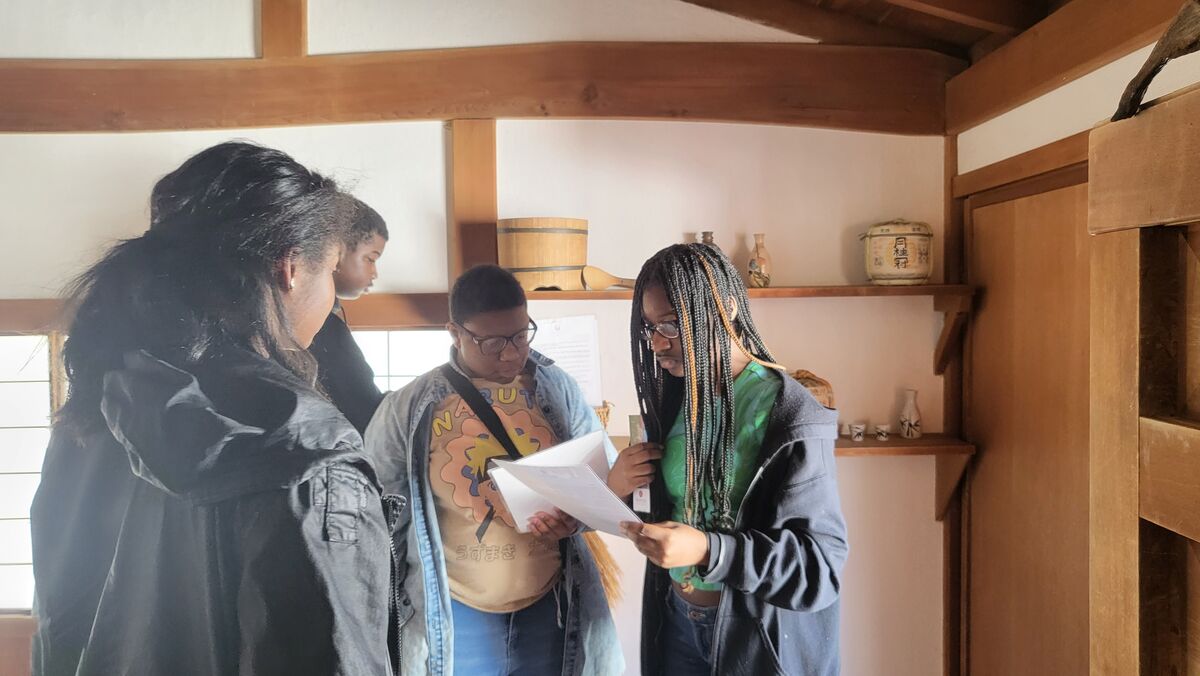 Happy Spring Break! A group of BDS 9th graders joined the BDS Community School Site Specialist on an exploration of the Japanese Shofuso House in Philadelphia on Saturday, and they had an AMAZING experience.
Happy Spring Break! A group of BDS 9th graders joined the BDS Community School Site Specialist on an exploration of the Japanese Shofuso House in Philadelphia on Saturday, and they had an AMAZING experience.
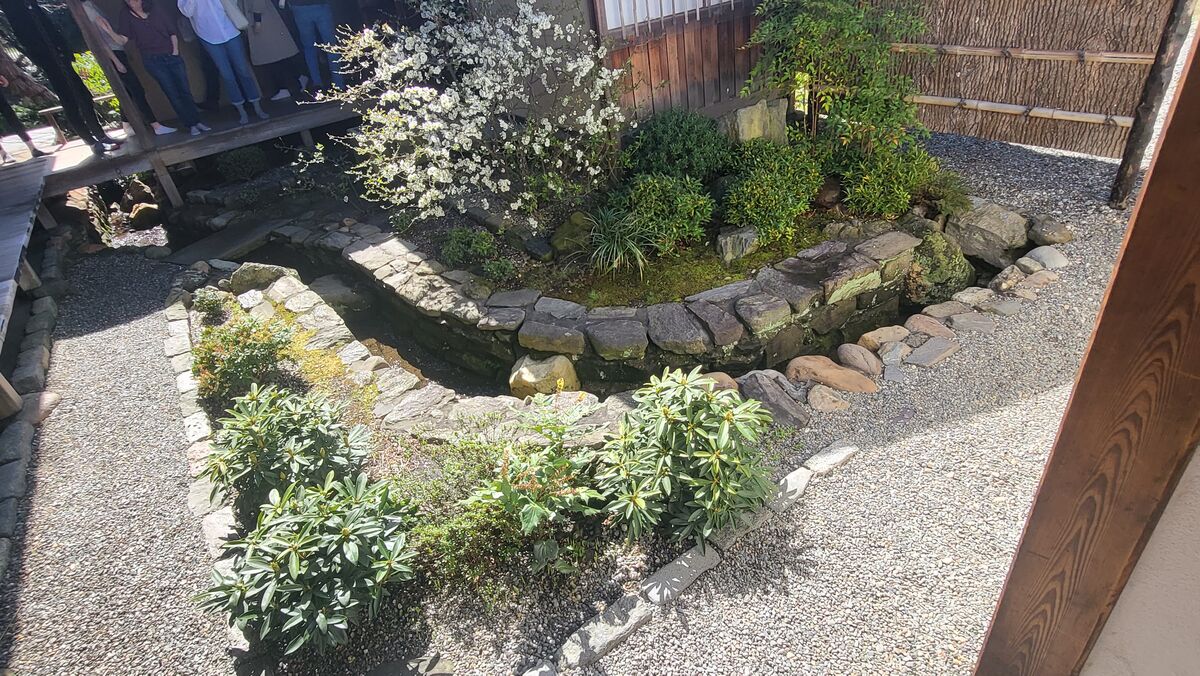 Shofuso is a 17th century-style Japanese house, designed by Japanese mid-century modernist architect Junzo Yoshimura in 1953. It was built in Nagoya, Japan, using traditional materials and techniques. The house was brought over to the United States, and then moved to Philadelphia in 1957. In 1958, the garden was redesigned by Japanese landscape designer Tansai Sano to compliment the new structure in the style of a 17th century viewing garden.
Shofuso is a 17th century-style Japanese house, designed by Japanese mid-century modernist architect Junzo Yoshimura in 1953. It was built in Nagoya, Japan, using traditional materials and techniques. The house was brought over to the United States, and then moved to Philadelphia in 1957. In 1958, the garden was redesigned by Japanese landscape designer Tansai Sano to compliment the new structure in the style of a 17th century viewing garden.
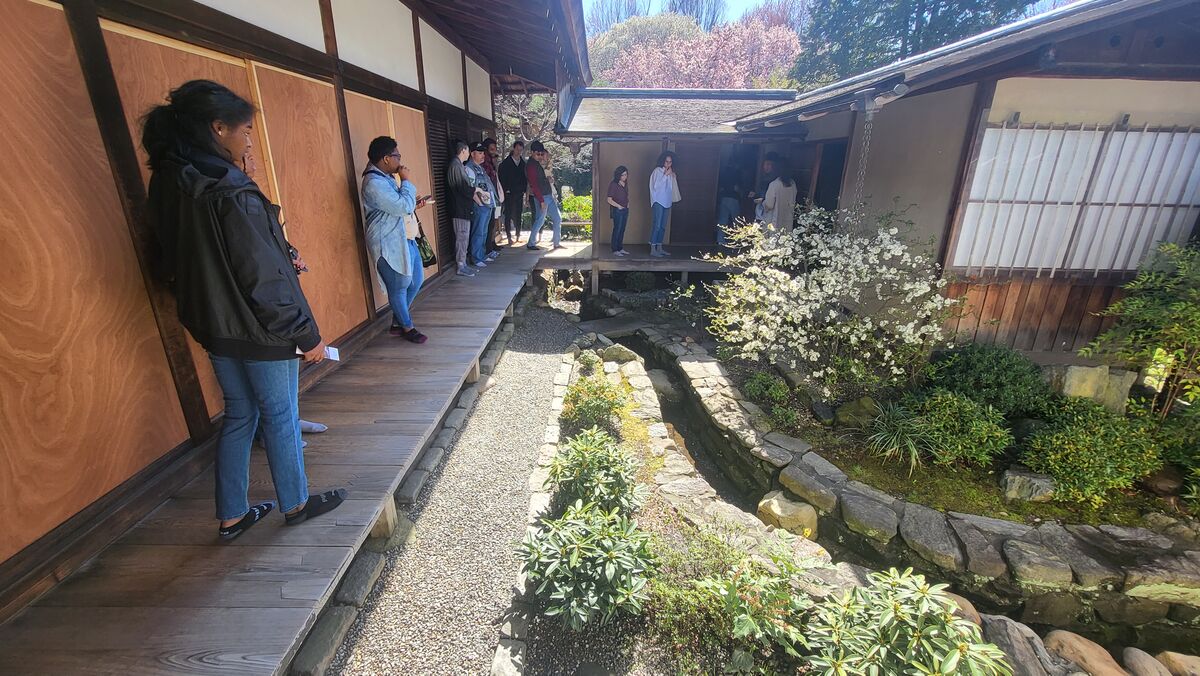 When one of the site docents learned our students were from the Baltimore Design School, he was excited to introduce himself as an architectural historian. Jon took time to explain that the house was built with timber from the Hinoki Cypress tree, a slow growing tree prized for its oil, anti-fungal and insect repelling properties and as well as its natural patina.
When one of the site docents learned our students were from the Baltimore Design School, he was excited to introduce himself as an architectural historian. Jon took time to explain that the house was built with timber from the Hinoki Cypress tree, a slow growing tree prized for its oil, anti-fungal and insect repelling properties and as well as its natural patina.
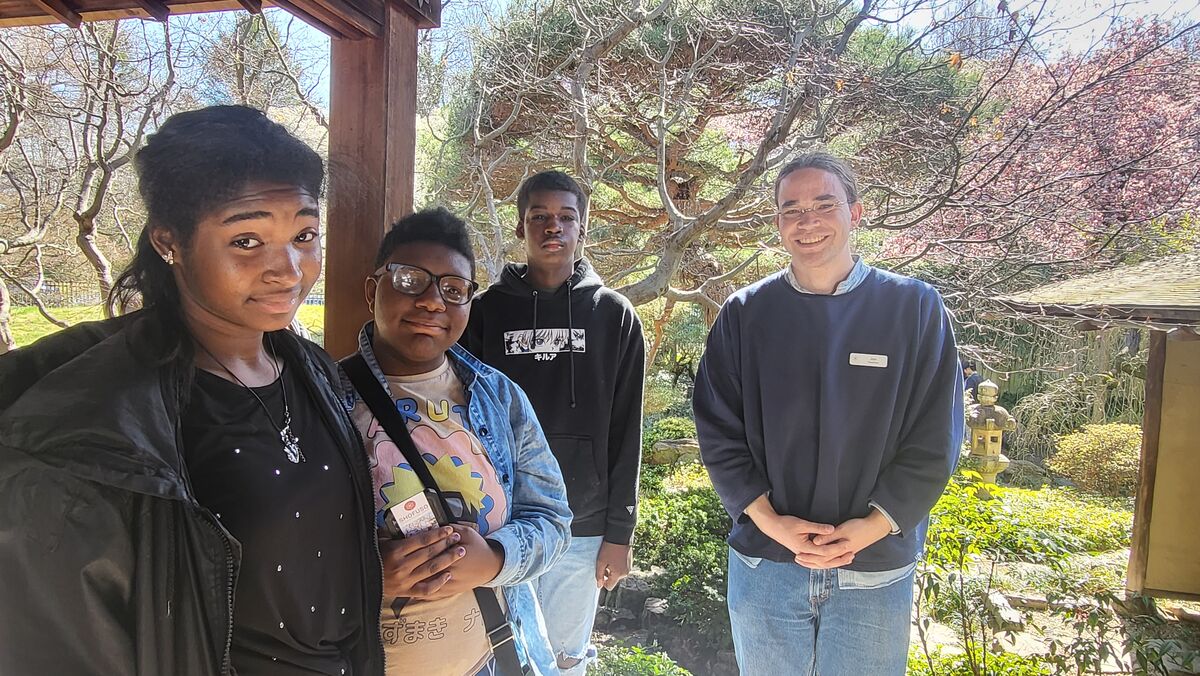 The wood that frames the Shofuso house is now over 100 years old (and is gorgeous!). The joinery is traditional Japanese Shosimono, a technique using various wood joints without the use of nails or hardware. Mortises called ‘hozo’ are carved into the wood in order to join two boards in a blind joint that’s not visible from the surface.
The wood that frames the Shofuso house is now over 100 years old (and is gorgeous!). The joinery is traditional Japanese Shosimono, a technique using various wood joints without the use of nails or hardware. Mortises called ‘hozo’ are carved into the wood in order to join two boards in a blind joint that’s not visible from the surface.

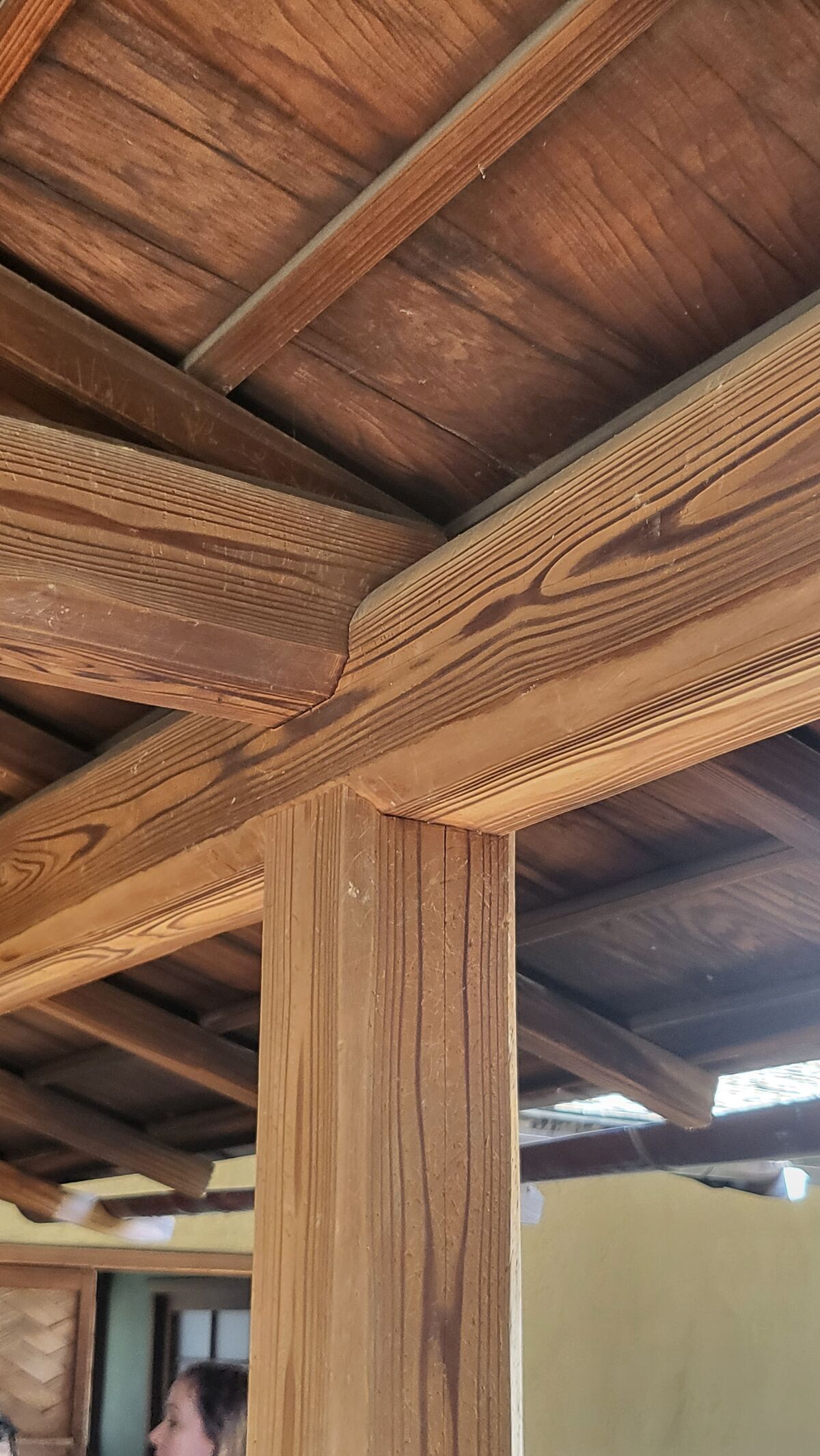
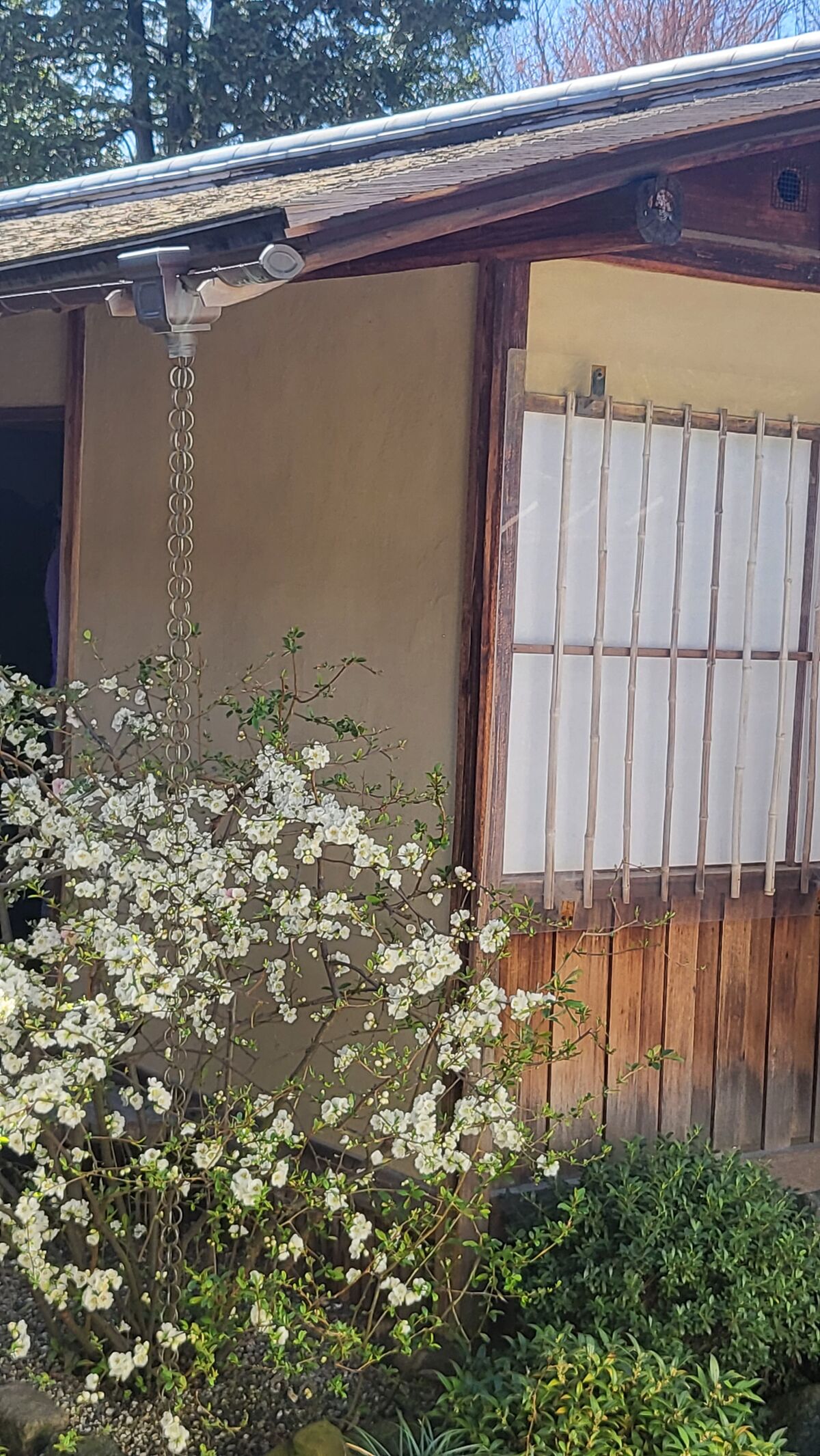 Iron is also displayed with the use of iron gutters and rain chains that direct water to a rock garden or water structure. These luxuries aren’t common in every home.
Iron is also displayed with the use of iron gutters and rain chains that direct water to a rock garden or water structure. These luxuries aren’t common in every home.
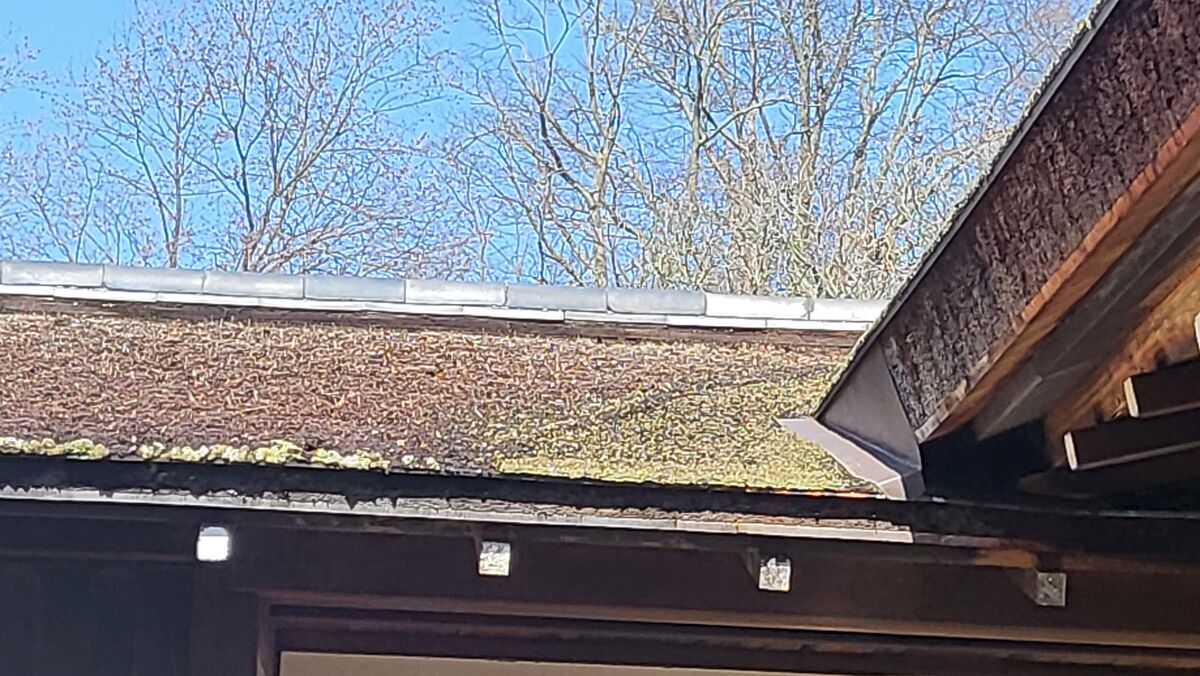
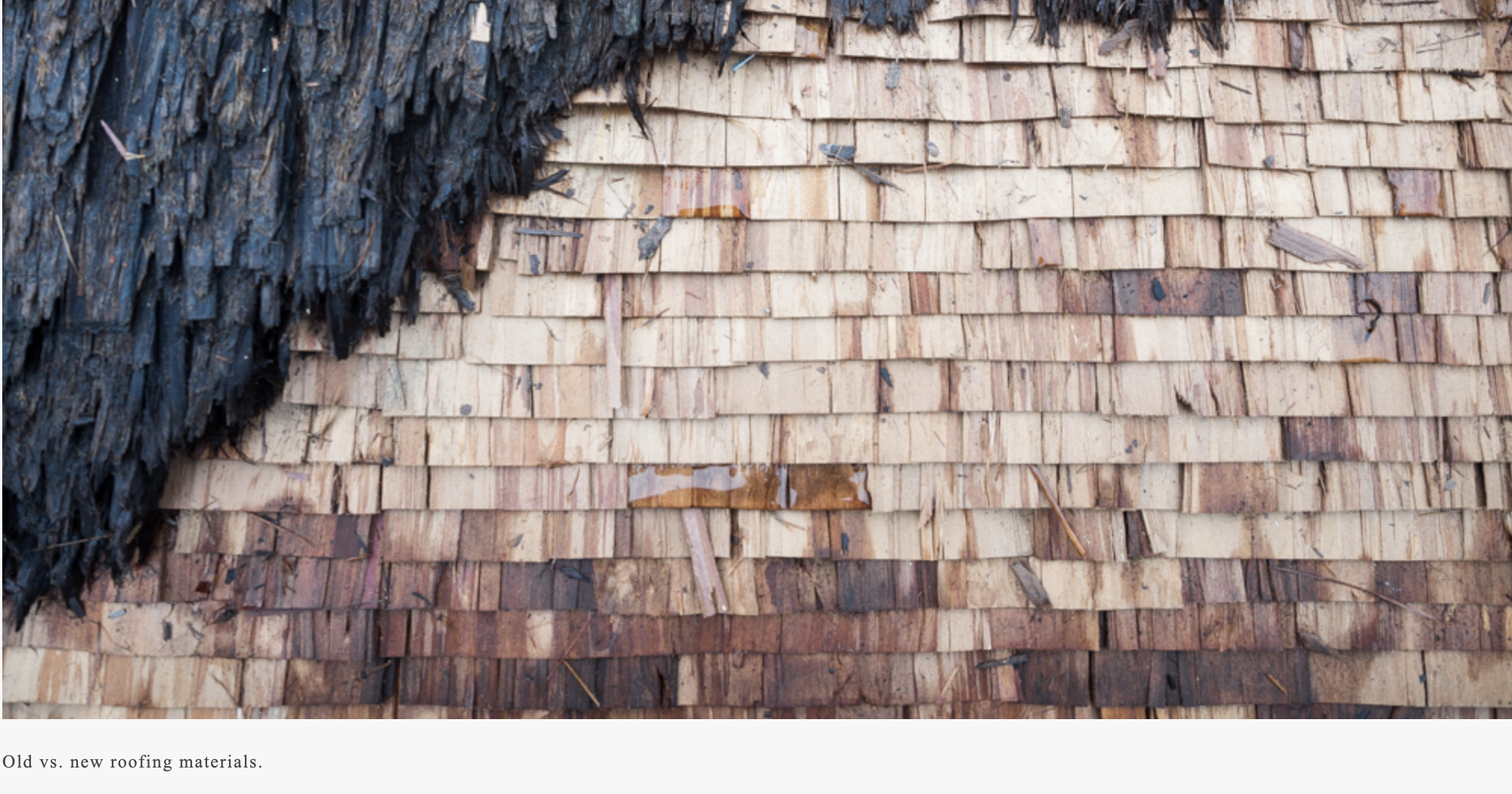
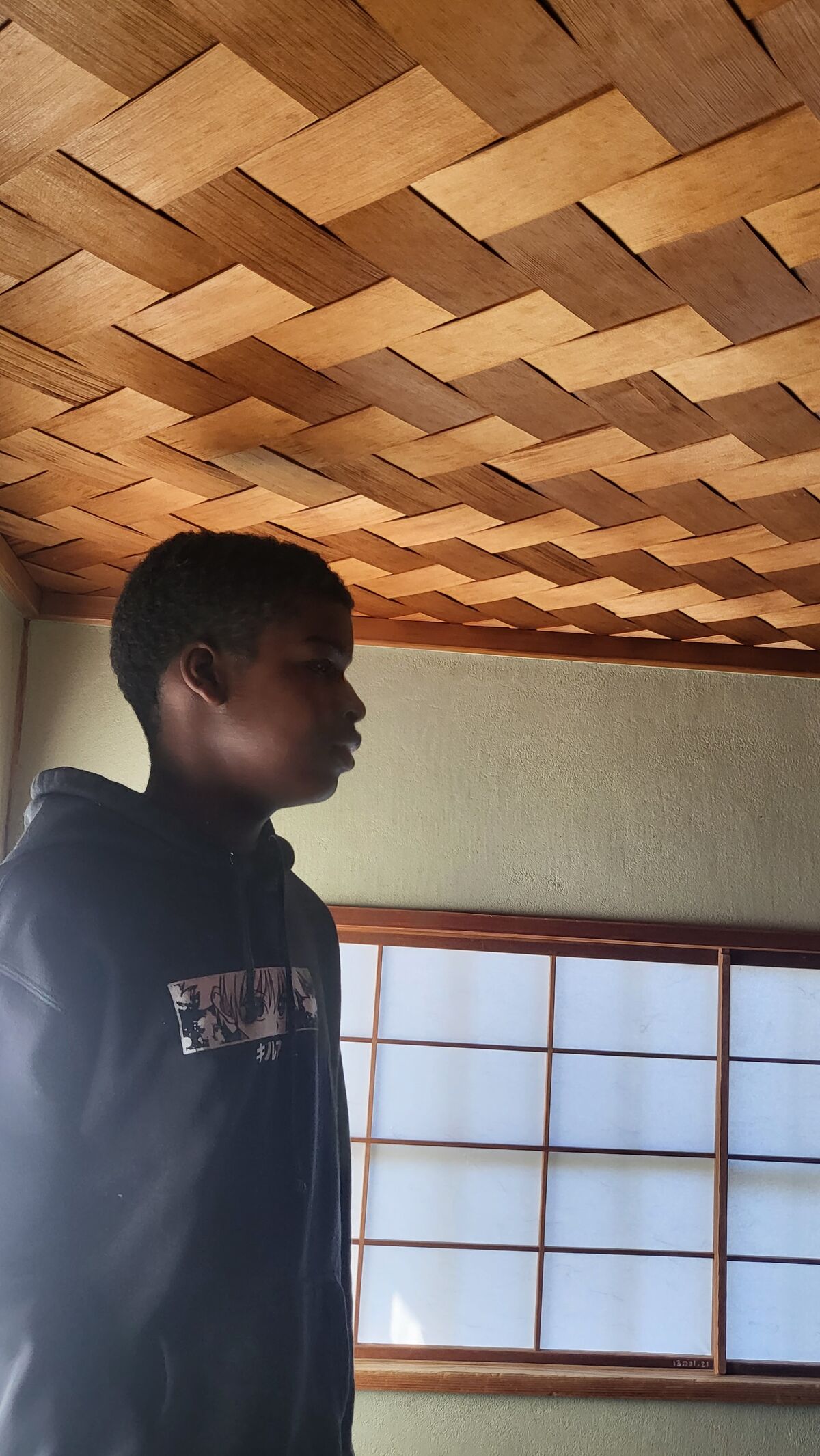 ‘Ajiro Tenjo’ is a term for wickerstyle ceiling. Bamboo strips are woven in a variety of patterns (depending on the preferred design) to create a 3D effect in the home. Judging from the size of this 1953 example, our 9th graders wouldn’t have much room to grow!
‘Ajiro Tenjo’ is a term for wickerstyle ceiling. Bamboo strips are woven in a variety of patterns (depending on the preferred design) to create a 3D effect in the home. Judging from the size of this 1953 example, our 9th graders wouldn’t have much room to grow!
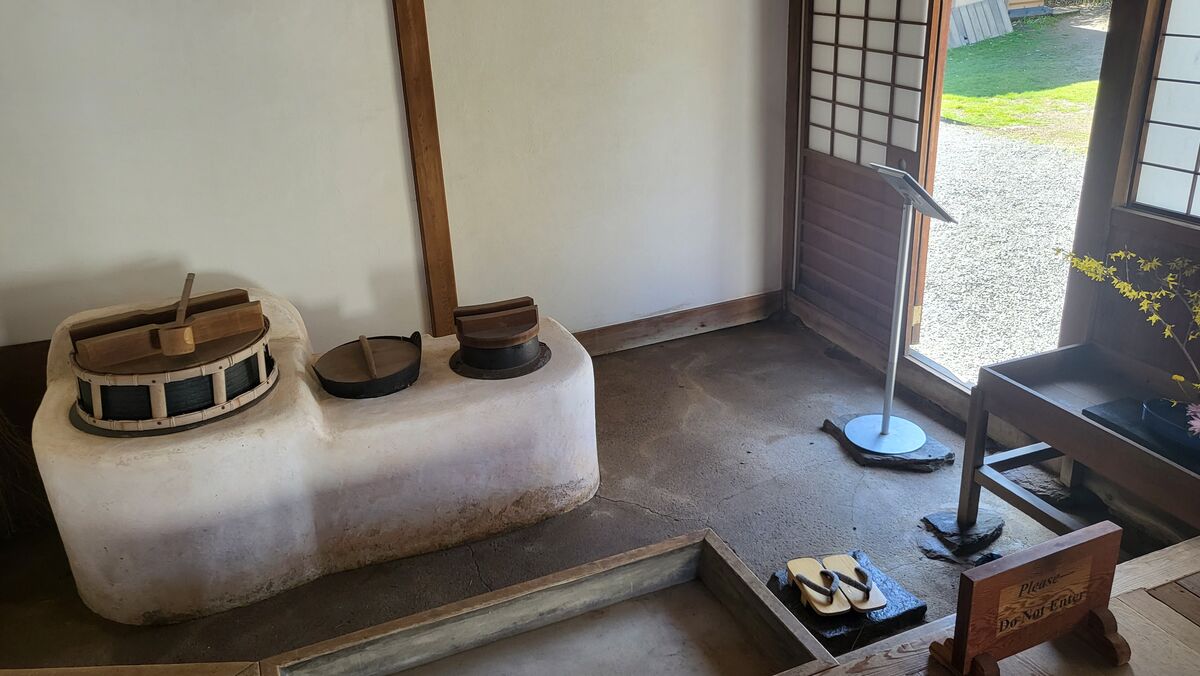
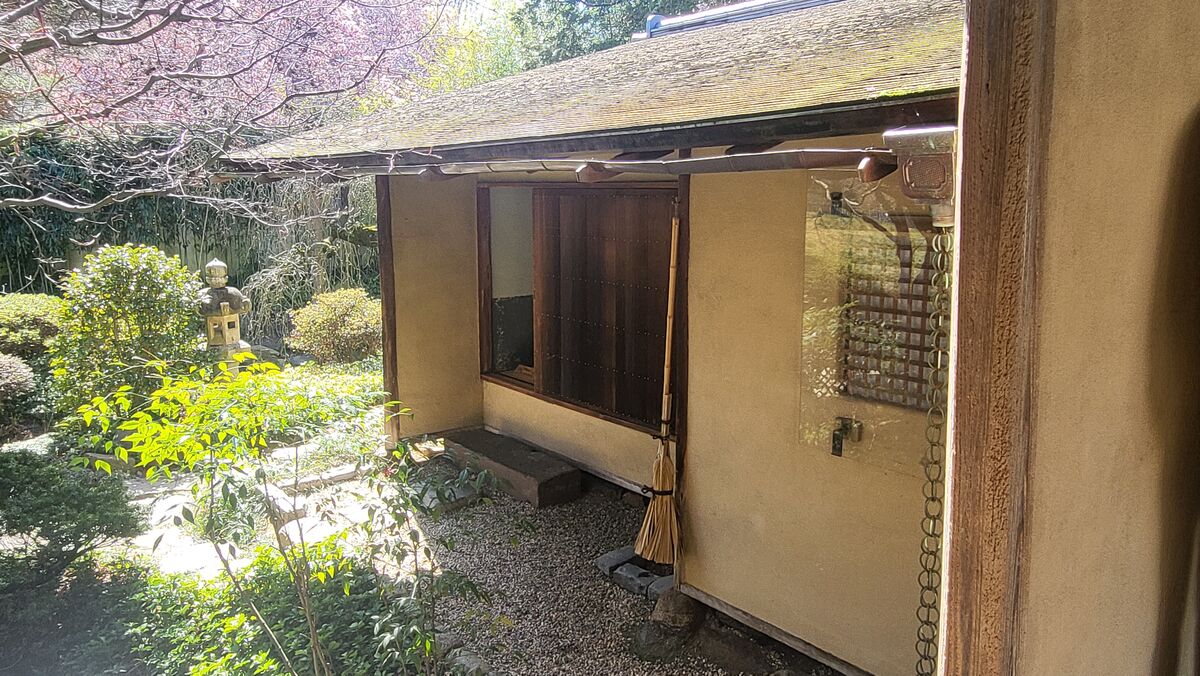 Outdoor access from the kitchen.
Outdoor access from the kitchen.
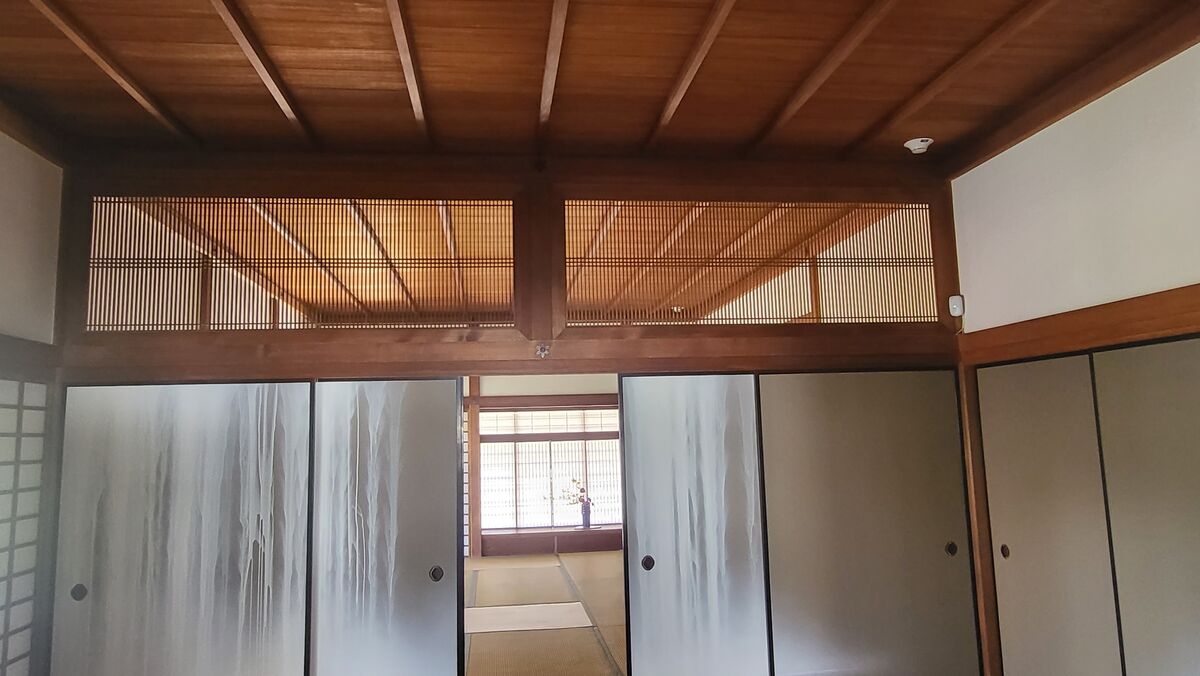 “Internationally-acclaimed nihon-ga painter, Hiroshi Senju, one of Japan’s most revered contemporary artists, created twenty full-scale murals for Shofuso Japanese House and Garden. The murals were installed on decorative paper sliding doors known as fusuma, and in the central tokonoma alcove, replacing the original murals destroyed by vandals in the 1970s.” – Japan America Society of Greater Philadelphia
“Internationally-acclaimed nihon-ga painter, Hiroshi Senju, one of Japan’s most revered contemporary artists, created twenty full-scale murals for Shofuso Japanese House and Garden. The murals were installed on decorative paper sliding doors known as fusuma, and in the central tokonoma alcove, replacing the original murals destroyed by vandals in the 1970s.” – Japan America Society of Greater Philadelphia
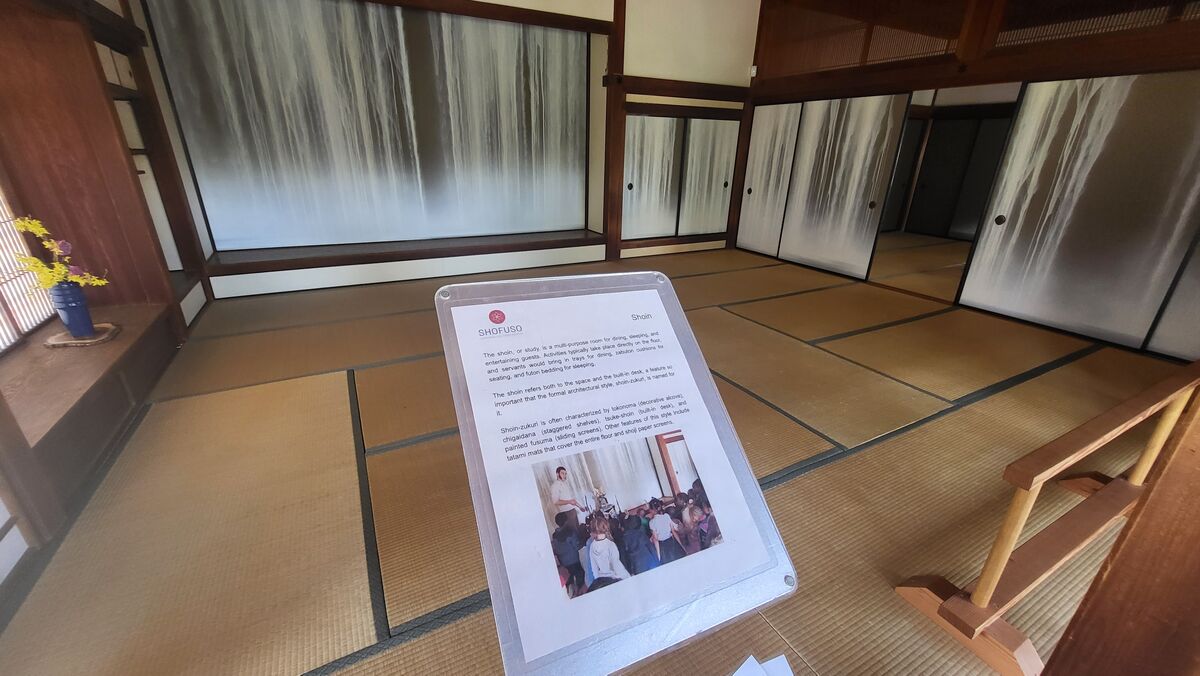
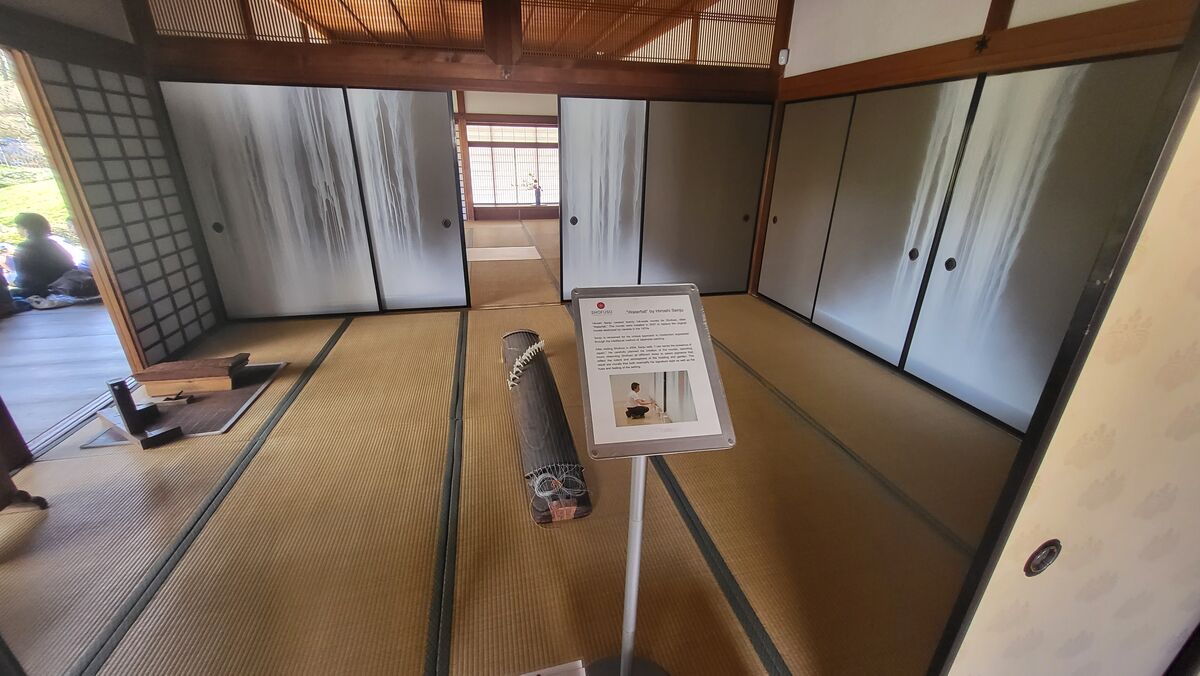
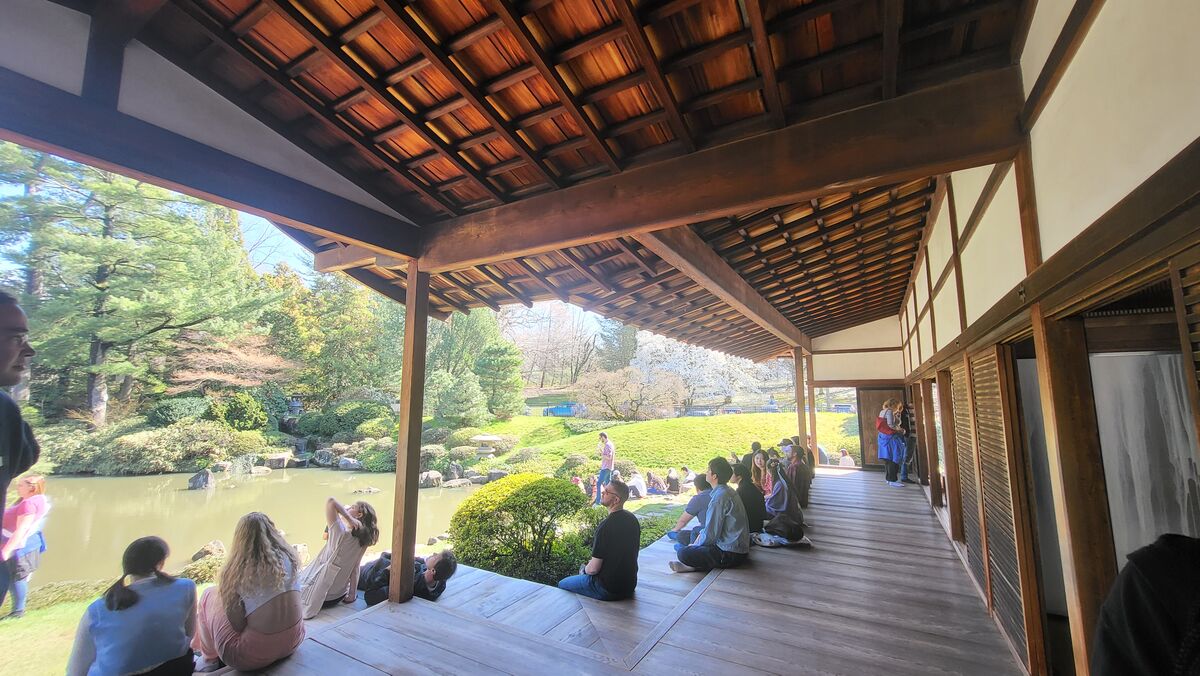 Surrounding the house are multiple access points to beautiful gardens and water. This porch captured a lovely cool breeze on such a warm day.
Surrounding the house are multiple access points to beautiful gardens and water. This porch captured a lovely cool breeze on such a warm day.
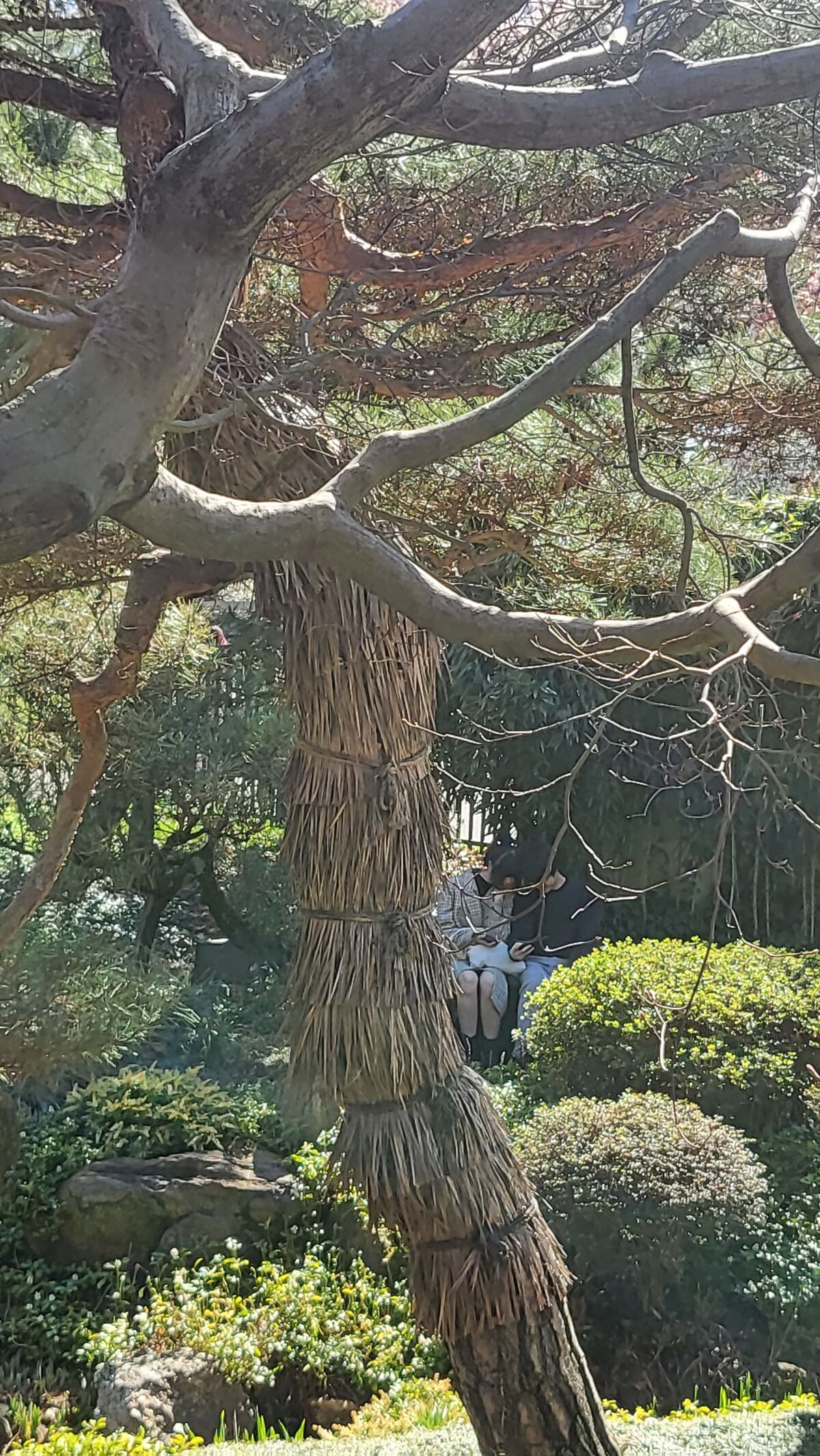
has found however that the use of this technique also keeps sap-sucking insects at bay, further protecting precious trees during warmer months.
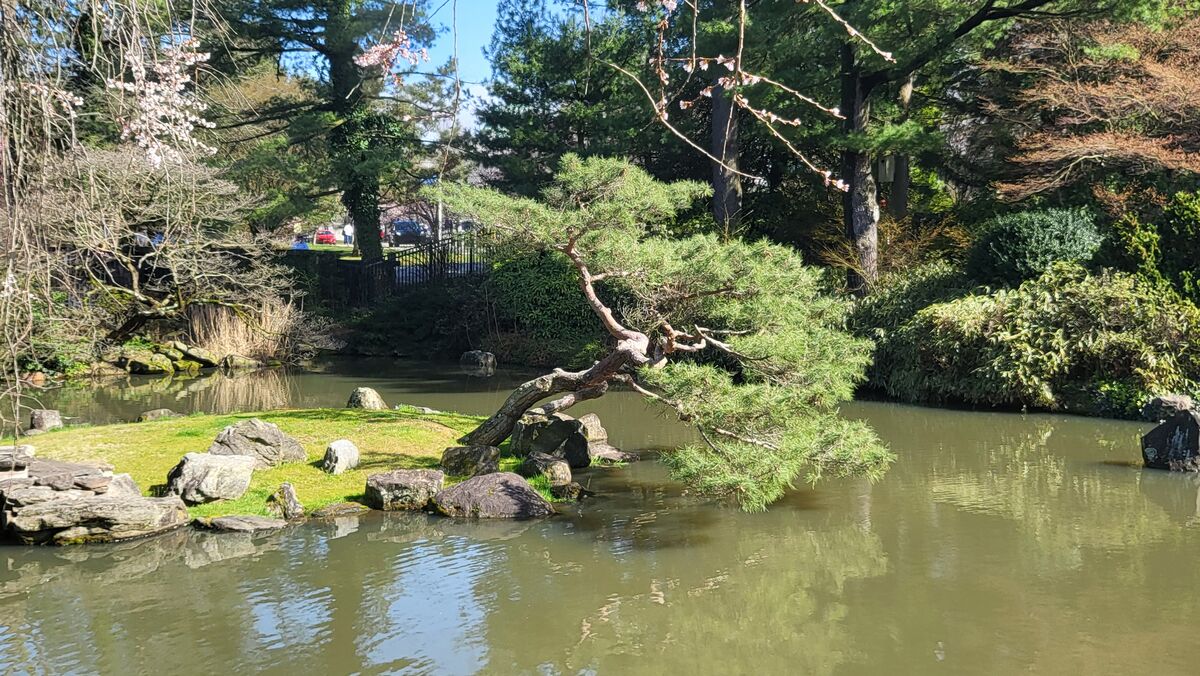
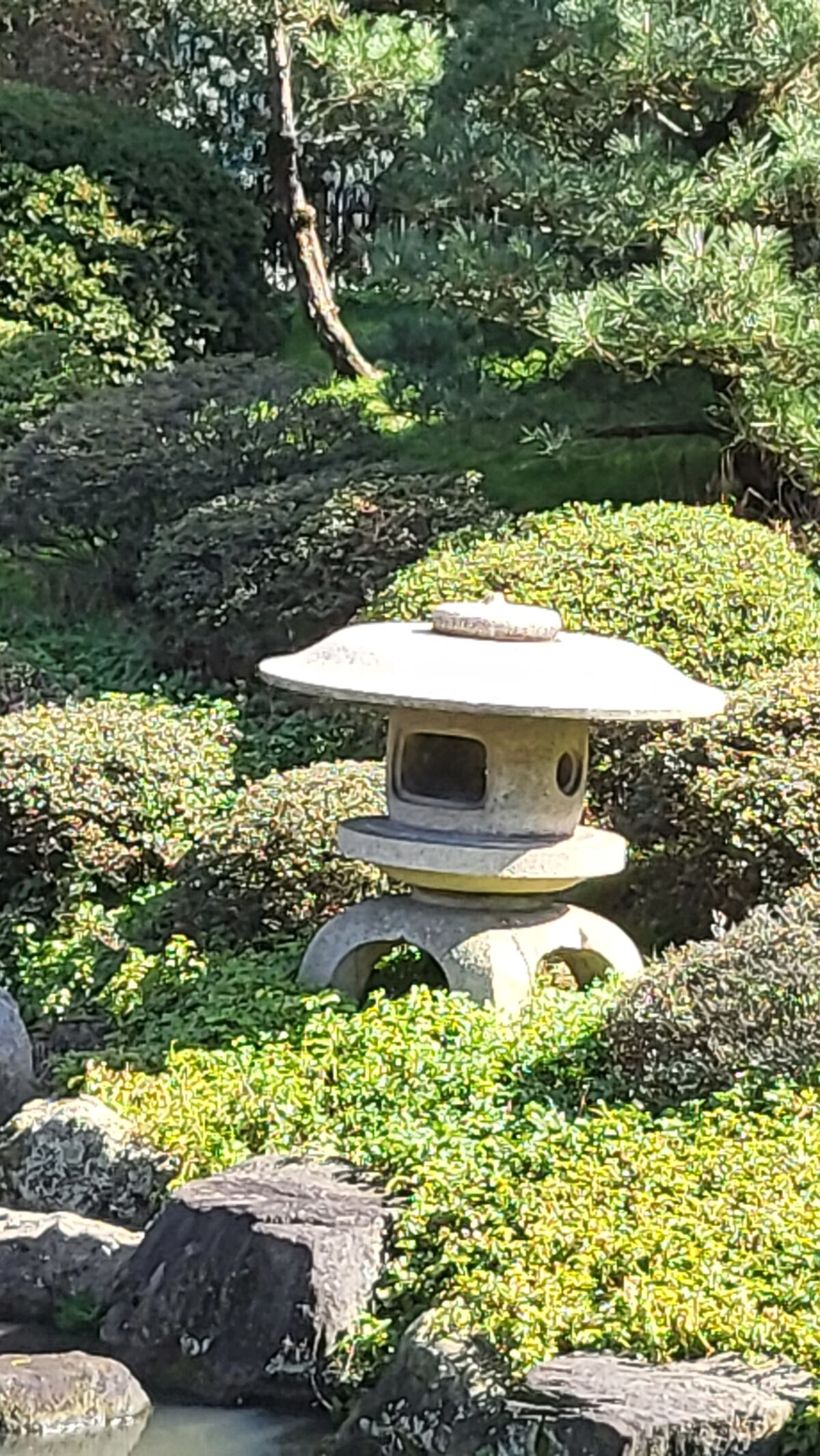
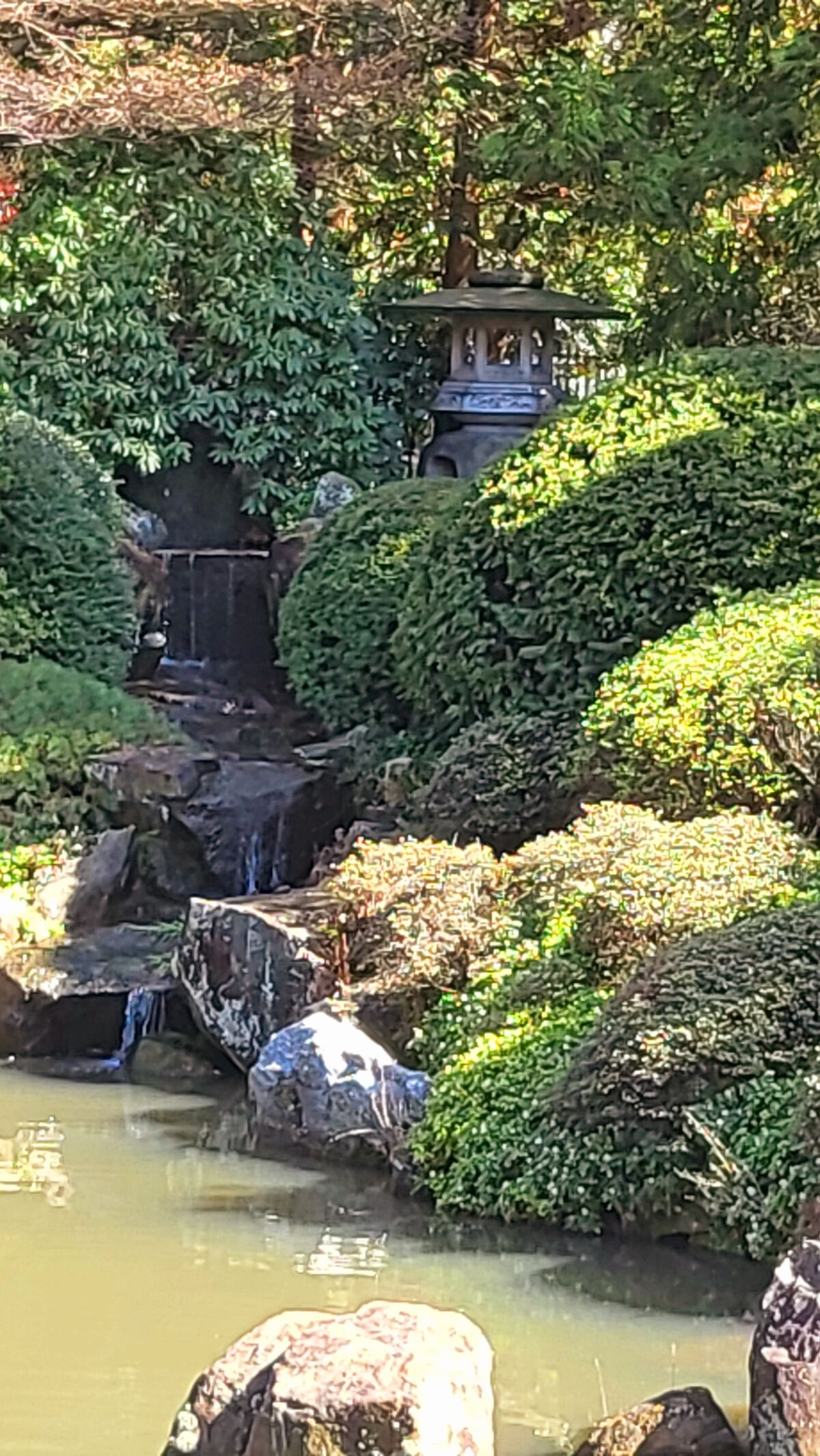
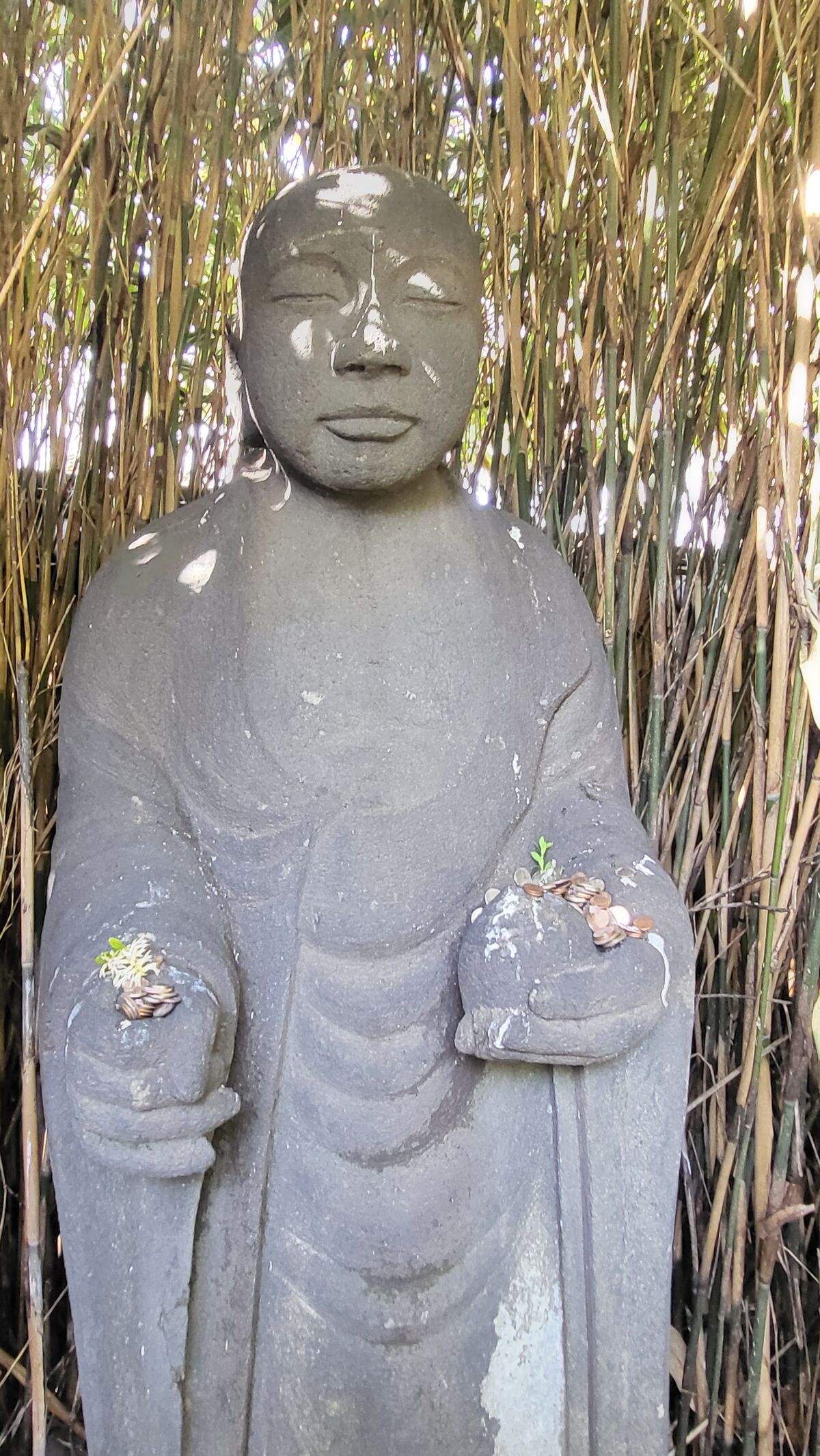
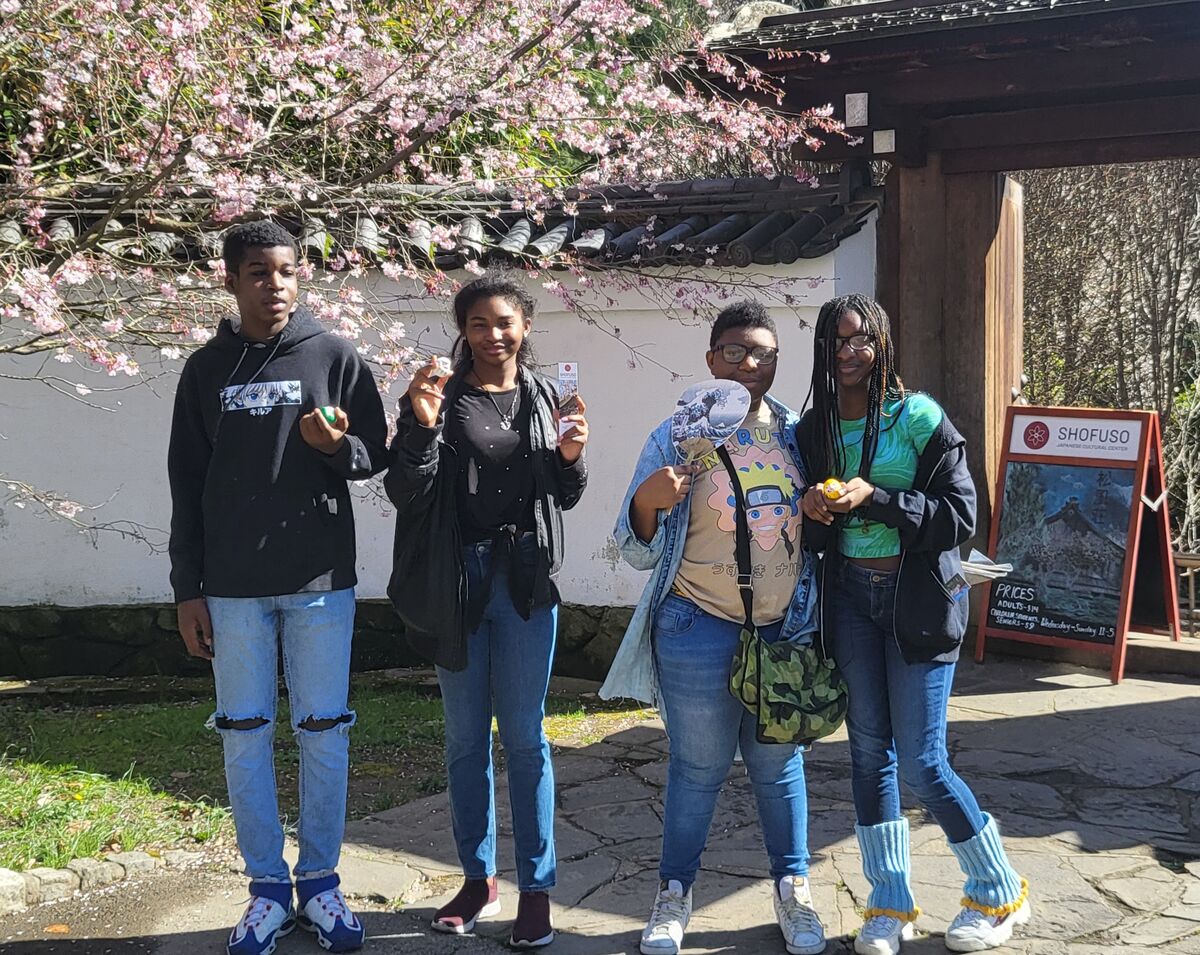
 Ps:
Ps:
Philly has amazing architecture, murals and art culture and…home to the best falafel, shwarma fries & tahina shakes anywhere!